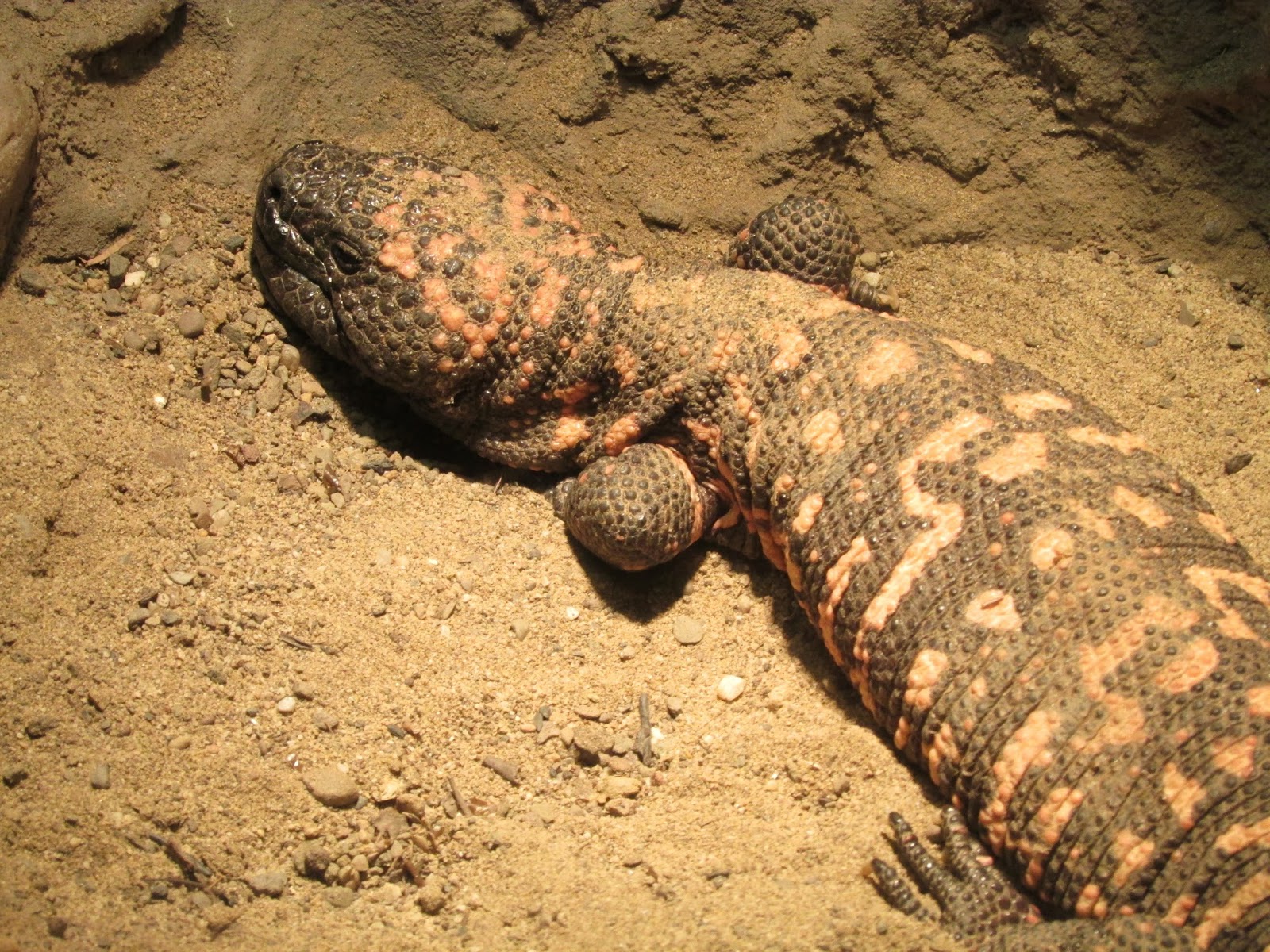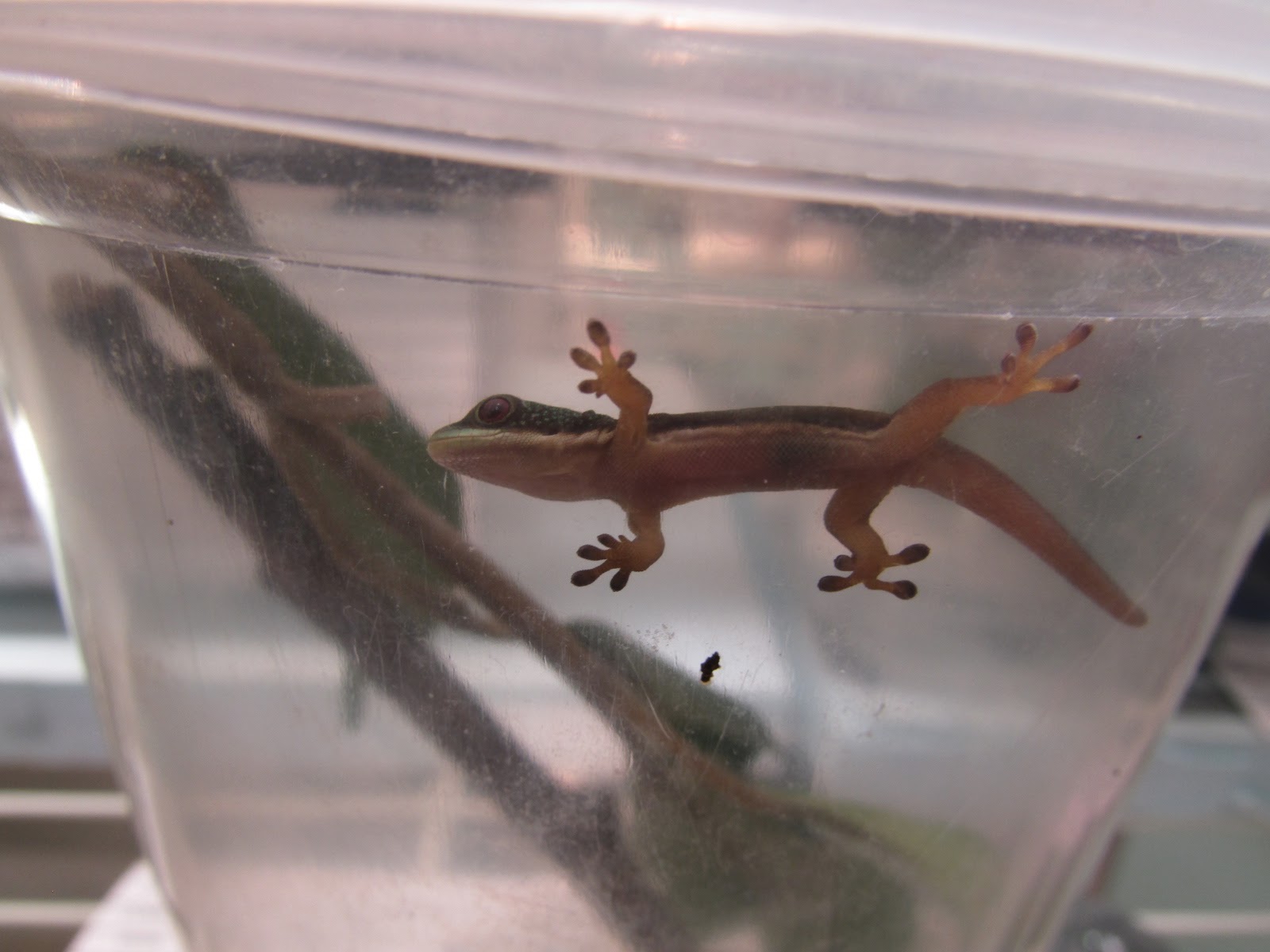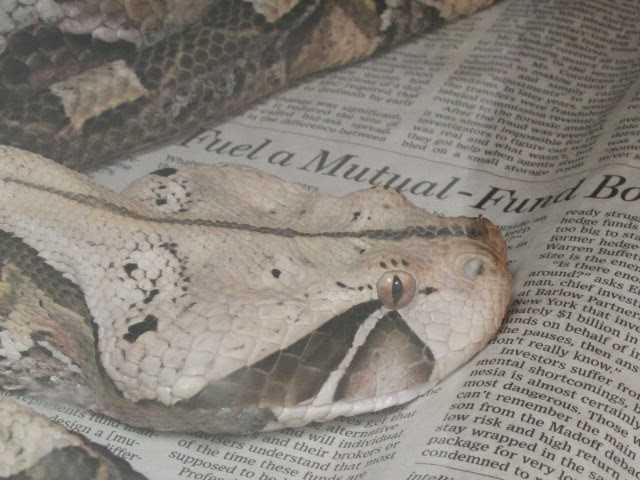Our visit was made particularly special through our guided tour, led by none other than the founder of Reptiland, Clyde Peeling. Through the tour he taught us basic biological information about the animals, but also had let us in on some of his personal experiences with herps. And, as the name suggests, the zoo was focused mostly on reptiles (and amphibians) so we were given a tour of all of the exhibits. The best part of it (in my opinion) was our tour of their behind-the-scenes, where we saw a lot of awesome animals, and because we were able to meet the caretakers. This portion of the trip was great because we were taught about how to properly care for the animals as well as meet some of them face-to-face.
A cane toad (Rhinella marina), notorious for being an invasive species in Australia, which is spreading quite rapidly.
Their introduction was intended for insect control, and they had eaten the insects (along with many other things they weren't supposed to).
Their introduction was intended for insect control, and they had eaten the insects (along with many other things they weren't supposed to).

Two things about this alligator snapping turtle (Macrochelys temminckii). It was performing a neat prey luring method, where it would wiggle its worm-looking tongue to attract fish. And, yes, it is covered in algae (brings 'sit-and-wait' to a new level).

Although it is hard to tell from this, the mata mata (Chelus fimbriata) has very well adapted camouflage which extends to skin extensions on its head that help it blend in.

It may be hard to believe that this small juvenile will become an adult which is the largest crocodile (and reptile) species in the world, the saltwater crocodile (Crocodylus porosus).

Here is (a headshot of) a young American alligator (Alligator mississippiensis), nice eyes!

The slow moving gila monster (Heloderma suspectum) has no need to move quickly,
both from its venom (used mainly for defense) and their skin is made tough by having bones in it (called osteoderms).
both from its venom (used mainly for defense) and their skin is made tough by having bones in it (called osteoderms).

Two fence lizards (Sceloporus), common lizards in the U.S.

Without its neck flaps out, this frilled lizard (Chamydosaurus kingii) looks much different than the popular image of them.

A day gecko (Phelsuma), as the name suggests they are most active during the day (diurnal), many geckos are not diurnal.
A baby gecko displaying their wonderful ability to 'stick' to things.
This is made possible through microscopic structures on their feet called setae and the plate-like lamellae.

Most people can recognize these lizards- the komodo dragon (Varanus komodoensis).
These two were less than 10 years old, and still had much growing to do.
These two were less than 10 years old, and still had much growing to do.

Here we saw two green anacondas (Eunectes murinus), the heaviest snakes in the world.
The more dull colored one is going through a shed, made more obvious from the 'bluing' of the eyes.

This was a splendidly colored, and quite active reticulated python (Python reticulatus),
which brings in the title of longest snake (and reptile).
It is not hard to believe why the rhino ratsnake (Rhynchophis boulengeri) got its name.
She was very inquisitive, and well behaved when we got to meet her up close.

A very exciting part for me is shown by the two pictures below, which are the two subspecies of gaboon viper (Bitis gabonica). The top image is of the West African gaboon viper (B. g. rhinoceros), distinguished by the horn-like nasal scales and an unbroken facial mark. Compared to the bottom image, the East African gaboon viper (B. g. gabonica), which lacks the 'horns' and has a split facial marking. (Awesome animals!)


Again we see the enchanting West African gaboon viper (G. b. rhinoceros). These guys don't move to frequently, so catching one in motion was quite exciting (for me at least). This one is performing what most would call a 'yawn,' but is moreover a realigning of jaws.

It is hard to deny the captivating looks of the eyelash viper (Bothriechis schlegelii).
The lack of eyelids, however, make it difficult for them to 'bat their eyelashes' at you.

A New York state resident: the timber rattlesnake (Crotalus horridus).
It is giving a good view of why they are a 'pit viper,' if you notice the hole (pit) below the nostril, which is a heat-sensing pit organ.

Fast moving, venomous, and beautiful; the Western green mamba (Dendroaspis viridis) has it all.
Their long, thin bodies are typical for arboreal species, as a way to distribute their weight on the branches to prevent breaking them.

Even this innocent-looking baby cobra (Naja) has enough venom to defend itself within a few hours of hatching.

A nice display of turtle, crocodilian, and varanid lizard skeletons, located in the main building.
In the behind-the-scenes we were able to hang-out with other cool (mammals) like this fruit bat (Pteropus).
On the more shy side, was this kinkajou (Potos flavus). We were told it was playing shy,
but it was very convincing when it started to suck on its knuckles.

For more information
Clyde Peeling's Reptiland:
Photos and Post by Joey Chase




This looks like it was a fun trip! I'm a huge fan of all reptiles and love herpetology. One of my greatest finds was a gila monster in AZ. The funny thing is that I was just driving down the road with my girlfriend and she couldn't understand why I was so excited about it. Anyways, thanks for your post!
ReplyDeletehttp://snakesatsunset.com/lizards-for-sale/